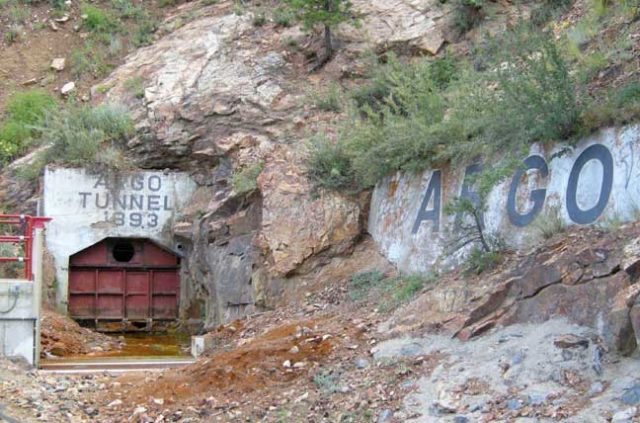In the mountains west of Denver runs a creek which has turned yellow from all the toxic waste that comes from the mines; it is a common sight after the 1859 gold rush in Colorado.
But thankfully, after three decades and a $62 million Superfund cleanup, Clear Creek is now starting to live up to its name. Anglers, rafters, and real estate investors are drawn to the historic mining town of Idaho Springs.
“The actual designation of the Superfund site at Idaho Springs I would say has been, in my view, nothing but positive,” said Bob Bowland, a longtime resident and City Council member.

The town of Silverton, which is located only 165 miles away, will be going through a similar process. The federal government will be embarking on another giant cleanup after a massive spill came from the Gold King last year.
However, the residents of Idaho Springs have warned Silverton that the process will be hard, especially in the early years. In 1983, when the Environmental Protection Agency (EPA) launched the project, the outside world believed that the entire town was contaminated and because of this the reputation and economy of the town suffered.
The small town of Idaho Springs – even now they only have 1,700 people living there – even felt the full weight of the EPA and it made some residents feel steamrolled.
“To my knowledge, not a single concern we had made a single difference in any of the analysis or outcomes,” former Clear Creek County Commissioner Nelson Fugate said. “In hindsight, everything came out fine,” Fugate stated.
Cadmium, lead, zinc, manganese, copper, and arsenic were being washed into Clear Creek from the mines that were around it.
“The name of Clear Creek was a joke,” Bowland said. “The creek was never clear, ever. It was just yellow.”

One treatment plant for wastewater has already been built while a second is under construction. There was a concrete-and-steel bulkhead installed in a mine tunnel so the wastewater can be controlled. Clean water created by rain and snowmelt has also been diverted away from piles of mineral-rich waste rock so contaminants wouldn’t be pushed into the creek. The residents were shocked at the results.
“Nobody is saying, ‘Oh, that damn Superfund site,'” County Commissioner Tim Mauck said. “It’s almost, if anything, a source of pride and achievement.”
Time Mauck and the other officials are hoping that anglers, rafters, and other outdoor enthusiasts will be drawn to their town so that they can stabilize their economy, which is still mostly dependent on mining. A mine that is known for its molybdenum may close, and officials are looking into other ways they can diversify their economy.
Bowland and partners bought one of the Superfund hotspots earlier this year, the Argo gold mill in Idaho Springs. They still offer tours just like the previous owners; however, they plan to open a hotel, conference center, restaurants, and housing.
Mary Jan Loevlie, who is a partner in the project, had some very harsh words for the EPA and its way of handling the cleanup, but she is betting that the community will flourish.
“I’m very optimistic or I wouldn’t be investing in the Argo,” she said.
Silverton and San Juan County were very hesitant to accept a cleanup from a Superfund, even with the nearby mines spewing out waste for decades. They feared they would lose all their tourism which is what their economy is based on. They were also worried about the EPA taking over their town and ruling over local affairs.

In 2015, an inadvertent blowout at the Gold King caused by an EPA-led cleanup crew forced them to come to the decision that something needed to be done, and only the federal government would be able to fund it.
Silverton and San Juan County officials took a tour of the Idaho Springs area late last year and made sure to take notes of all the Superfund mistakes. They made sure to press the EPA to limit the area they covered in their Superfund designation.
Nancy Graham, an EPA spokesperson, said that the agency had made huge strides to make sure the residents of Silverton are involved with the Superfund planning, even holding public meetings so they can explain the technical information.
“Providing early and meaningful community involvement is a cornerstone of every Superfund cleanup,” she said.
It is far too soon to known if Silverton’s tourism economy will skyrocket like Idaho Springs’ did.
Idaho Springs is in a much better position for tourism since they can pull from the three million or so people in the Denver metropolitan area 30 miles away. Silverton, on the other hand, is six hours away from Denver in the southeast corner of the state.
